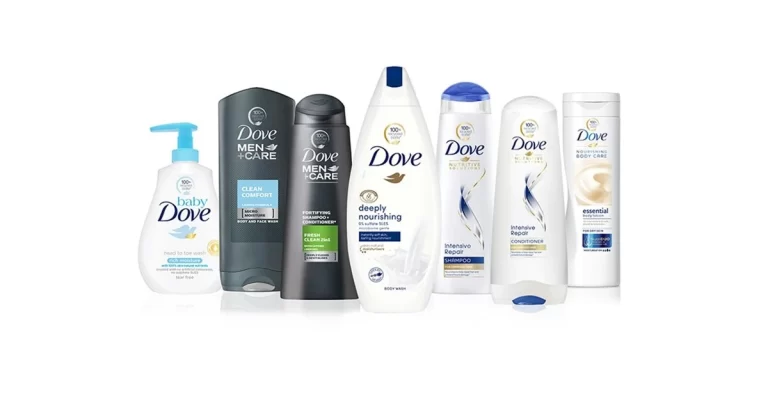Wayfair, founded in 2002, has grown to become one of the largest online destinations for home furnishings and decor. Specializing in the e-commerce sector for furniture, Wayfair offers an expansive selection of over 18 million products from more than 11,000 global suppliers. This case study explores how Wayfair has leveraged e-commerce strategies to dominate the online furniture market, the challenges it faced, and the innovative solutions it implemented to drive growth.
The Rise of E-commerce for Furniture
The e-commerce market for furniture has experienced significant growth over the past decade, driven by advancements in technology, changing consumer behavior, and the increasing preference for online shopping. Wayfair, with its extensive product offerings and customer-centric approach, has positioned itself as a leader in this sector. The company’s ability to provide a seamless online shopping experience, coupled with robust logistics and supply chain management, has been key to its success.
Business Model and Strategy
Diverse Product Range and Partnerships
Wayfair’s business model revolves around offering a wide variety of products that cater to different tastes, styles, and budgets. The company operates five distinct brands: Wayfair, Joss & Main, AllModern, Birch Lane, and Perigold, each targeting specific customer segments. By collaborating with a large network of suppliers, Wayfair ensures a vast inventory, which is a critical factor in retaining and attracting customers in the competitive e-commerce for furniture market.
Technology-Driven Approach
Wayfair’s success is deeply rooted in its innovative use of technology. The company employs advanced data analytics, machine learning, and augmented reality (AR) to enhance the customer experience. For instance, Wayfair’s AR feature allows customers to visualize how furniture will look in their space, reducing the uncertainty that often accompanies online purchases of large items.
Logistics and Supply Chain Management
To maintain a competitive edge, Wayfair has invested heavily in its logistics infrastructure, including a network of warehouses and fulfillment centers across North America and Europe. The company’s proprietary logistics system, CastleGate, optimizes inventory placement and ensures fast delivery, which is a crucial element of customer satisfaction in e-commerce for furniture.
Customer Experience and Service
Wayfair places a strong emphasis on customer service, offering features like easy returns, free shipping on most orders, and a dedicated customer support team. The company’s website and mobile app are designed to provide a user-friendly shopping experience, with detailed product descriptions, customer reviews, and personalized recommendations based on browsing history.
Challenges Faced
- High Operational Costs: Running an e-commerce platform for bulky items like furniture presents unique challenges, particularly in logistics and delivery. Wayfair has faced high operational costs due to the need for large storage spaces, complex delivery logistics, and handling of returns for large items.
- Intense Competition: The e-commerce for furniture market is highly competitive, with major players like Amazon, IKEA, and Walmart also vying for market share. To differentiate itself, Wayfair has had to continuously innovate and enhance its value proposition, focusing on customer experience and a broad product range.
- Profitability Concerns: Despite its rapid growth, Wayfair has struggled with profitability. The company’s aggressive investment in logistics, technology, and marketing has often outweighed its revenue growth. Balancing growth with profitability remains a key challenge for Wayfair.
Solutions and Innovations
Expansion of Private Label Brands
Wayfair has launched several private label brands to offer exclusive products, which not only differentiates it from competitors but also allows for better control over pricing and quality. This strategy helps in improving margins and customer loyalty.
Enhanced Data Analytics and Personalization
By leveraging big data, Wayfair provides personalized shopping experiences that cater to individual customer preferences. This includes targeted marketing campaigns, personalized product recommendations, and a tailored shopping experience that keeps customers engaged.
Sustainability Initiatives
Wayfair has introduced several sustainability initiatives, including sourcing eco-friendly products and optimizing packaging to reduce its environmental footprint. These efforts resonate with the growing number of consumers who prioritize sustainability in their purchasing decisions.
Results and Impact
Wayfair’s performance from 2015 to 2023 showcases significant growth, particularly during the pandemic in 2020 when net revenue surged to $14.1 billion due to increased online shopping for home goods. Despite subsequent revenue declines in 2021 and 2022, Wayfair maintained a steady increase in the average order value, reaching $292 by 2023. The consistent rise in the repeat customer order share, which reached 78% in 2023, indicates strong brand loyalty. Mobile orders have also seen a steady upward trend, reflecting the increasing importance of mobile commerce in Wayfair’s overall strategy.
- Market Leadership: Wayfair has established itself as a market leader in the e-commerce for furniture space, with annual revenues exceeding $13 billion as of 2023. Its large product selection, superior customer service, and technological innovation have been key drivers of this success.
- Customer Base Growth: The company’s customer base has grown significantly, with over 31 million active customers as of 2023. Wayfair’s focus on a seamless shopping experience, coupled with competitive pricing and a wide range of products, has attracted a diverse demographic.
- Continued Innovation: Wayfair continues to invest in new technologies, such as artificial intelligence and machine learning, to further refine its operations and customer offerings. These investments are expected to drive future growth and maintain its competitive edge in the e-commerce for furniture market.
Conclusion
Wayfair’s journey in the e-commerce for furniture market illustrates the importance of a customer-centric approach, technological innovation, and efficient logistics in achieving success. While the company faces ongoing challenges related to profitability and competition, its commitment to improving the customer experience and expanding its product range positions it well for future growth.
As e-commerce for furniture continues to evolve, Wayfair’s strategies and innovations will likely serve as a benchmark for other companies looking to thrive in this dynamic market.
Key Takeaways
- Innovation in Technology: Wayfair’s use of AR and data analytics enhances customer experience and operational efficiency.
- Supply Chain Excellence: Investment in proprietary logistics systems like CastleGate is crucial for managing the complexities of furniture e-commerce.
- Challenges of Scale: Balancing rapid growth with profitability remains a key challenge for Wayfair.
Suggested Action Points
- Explore Opportunities in Sustainable Products: Expanding the range of eco-friendly furniture could attract a broader, environmentally-conscious customer base.
- Further Personalization: Enhanced personalization could drive higher conversion rates and customer retention.




